This article describes our hike on the Canyon Trail in Kasha-Katuwe Tent Rocks, which is located near Santa Fe and Bandelier National Monument.
Summary
Nestled just outside of Santa Fe, New Mexico, the Kasha-Katuwe Tent Rocks National Monument offers a unique and breathtaking hiking experience. Known for its striking rock formations that resemble giant “tents” or “tipis,” this hidden gem in the high desert of northern New Mexico is a must-see for nature lovers and outdoor adventurers alike.
| Total Distance | 3.5 miles (5.6 km) |
|---|---|
| Elevation Gain | 630 feet (192 meters) |
| Typical Time | 2 to 3 hours |
| Difficulty Level | Moderate |
The trail is a loop, with the first part leading through a narrow slot canyon and the second part offering sweeping views from a ridgeline above the canyon. The hike is suitable for most people with a moderate level of fitness and is family-friendly, though there are a few steep sections. We did this hike in July with our two children aged 9 and 13 at the time.
Getting There
The trailhead is located within the Kasha-Katuwe Tent Rocks National Monument, about 40 miles (65 km) south of Santa Fe, and just off Highway 25. To get there, take I-25 to Exit 264 (South Pecos), then head east on Highway 22 and follow the signs to the monument. A parking lot is available at the trailhead, but note that the parking lot can fill up quickly, especially on weekends.
There is an entrance fee to the park (typically around $5 per person, but it’s best to check current rates before you go), and it’s recommended to arrive early to avoid the crowds and the heat.
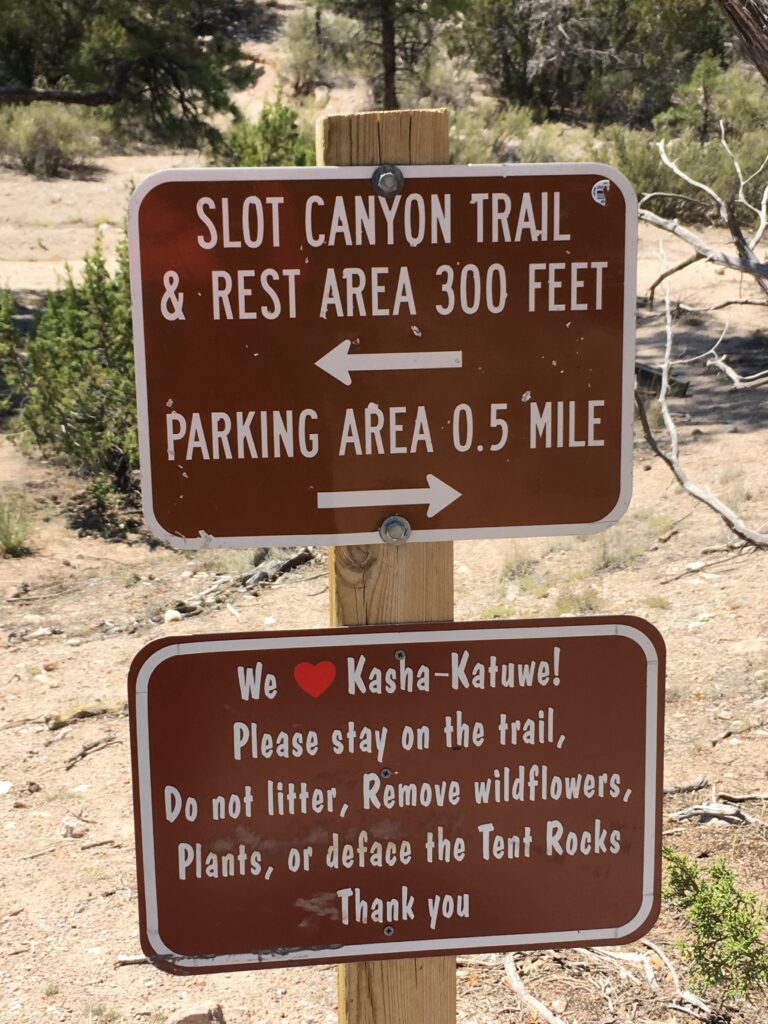
The Hike
Start of the Trail: Slot Canyon
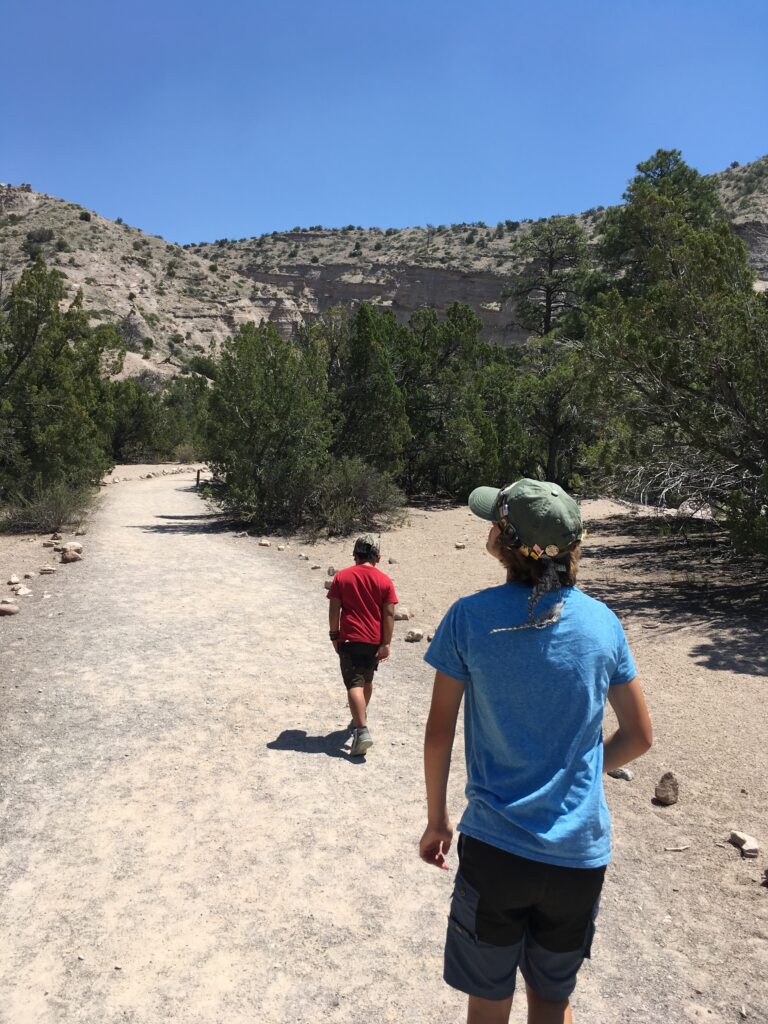
The Kasha-Katuwe Tent Rocks Trail begins with a gentle climb into a narrow, winding slot canyon. The trail here is shaded, and you’ll be surrounded by towering rock walls on both sides, creating a sense of adventure as you follow the winding path. The canyon is about 300 feet (91.5 meters) long, and you’ll walk through a maze of rock formations shaped by centuries of erosion. The light filtering through the canyon creates beautiful, shifting shadows, making it feel like you’re walking through a natural cathedral.

Keep an eye out for interesting rock textures and formations—this area is filled with layers of volcanic tuff and pumice, which have been carved into unique shapes by wind and water over millennia.
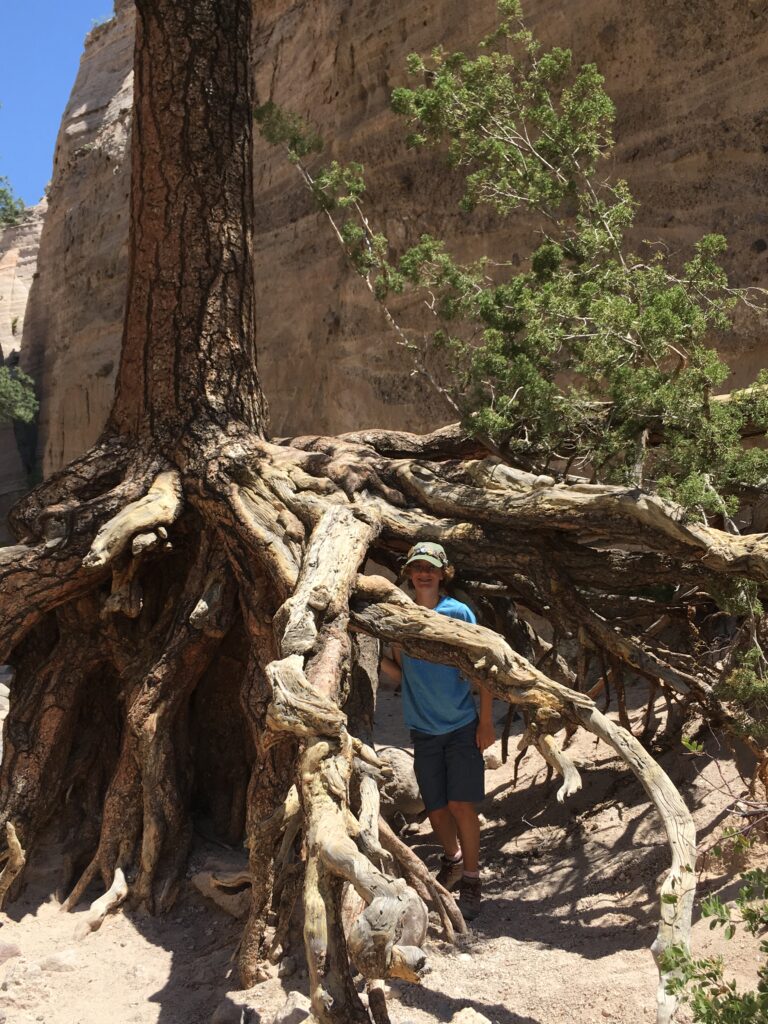
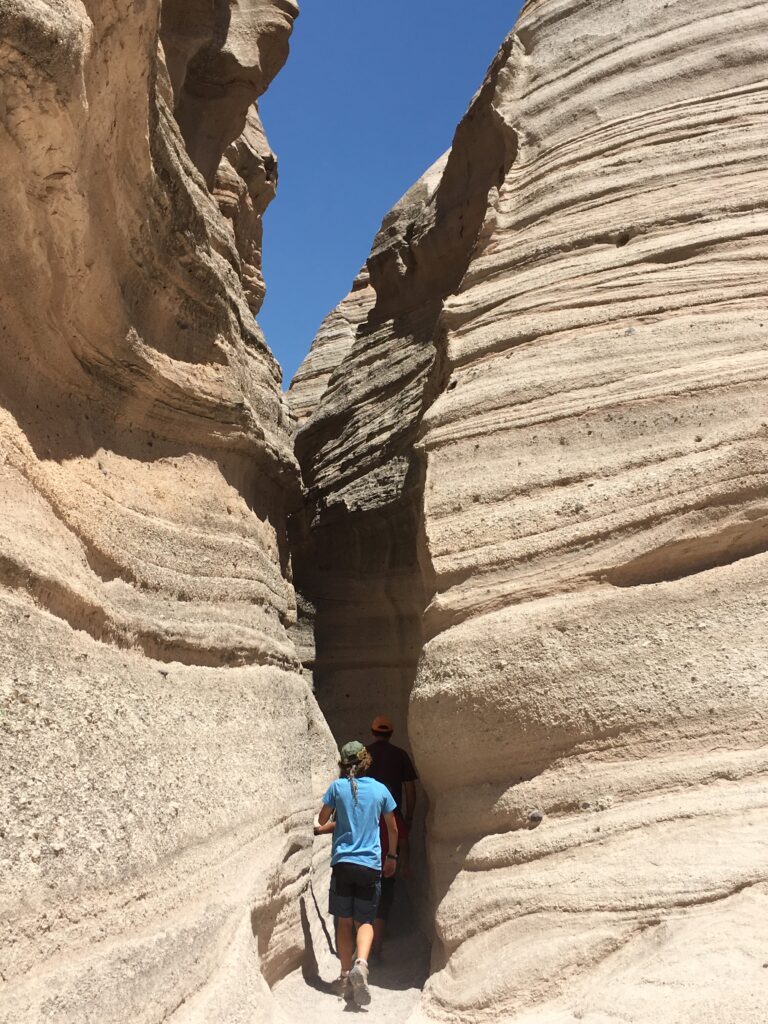

The “Tent Rocks”
As you exit the narrow canyon, the trail opens up to a wider area filled with the iconic cone-shaped rock formations that give the monument its name. These “tent rocks” are actually hoodoos—tall, thin spires of rock formed by erosion of volcanic ash layers. The unique formations have a tent-like shape, with a cap rock sitting atop a slender column, creating an appearance of a collection of giant tents or teepees.
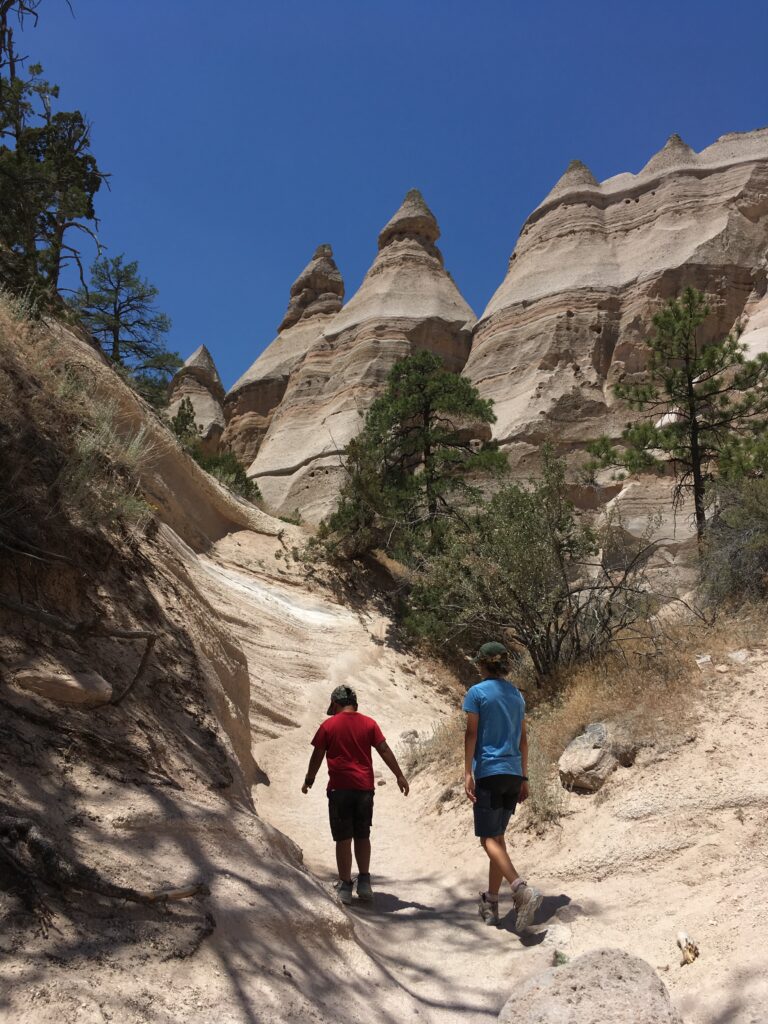
Take your time to explore this fascinating landscape, snapping photos of the otherworldly scenery. The rock formations come in a range of colors, from soft whites to sandy browns, and they seem to change in hue depending on the angle of the sunlight.
Climb to the Summit
From here, the trail begins to climb steadily, taking you through a series of switchbacks. This section of the hike is steeper and requires a bit more effort, but the reward is worth it. As you ascend, you’ll be treated to panoramic views of the surrounding desert landscape, with the distant Sangre de Cristo Mountains on the horizon. The ridge at the top provides a bird’s-eye view of the tent rock formations below, offering the best vantage point for photographs.
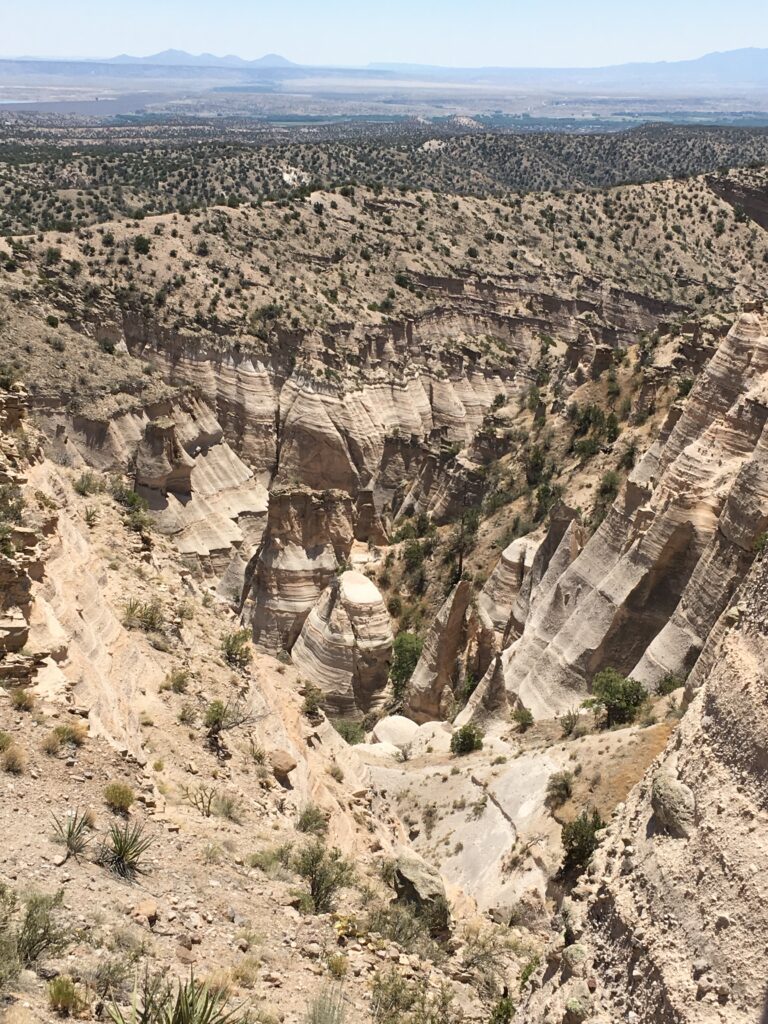
Once you reach the summit, you’ll be at an elevation of about 6,400 feet (1,950 meters), and the views are absolutely stunning. On clear days, you can see for miles, taking in the vast high desert, the nearby Jemez Mountains, and even the Rio Grande Valley in the distance.
The Descent
The descent is mostly along the same trail but with a slightly different perspective. As you make your way back down, you’ll pass through the tent rocks once more and retrace your steps through the slot canyon, offering a sense of symmetry to your hike.
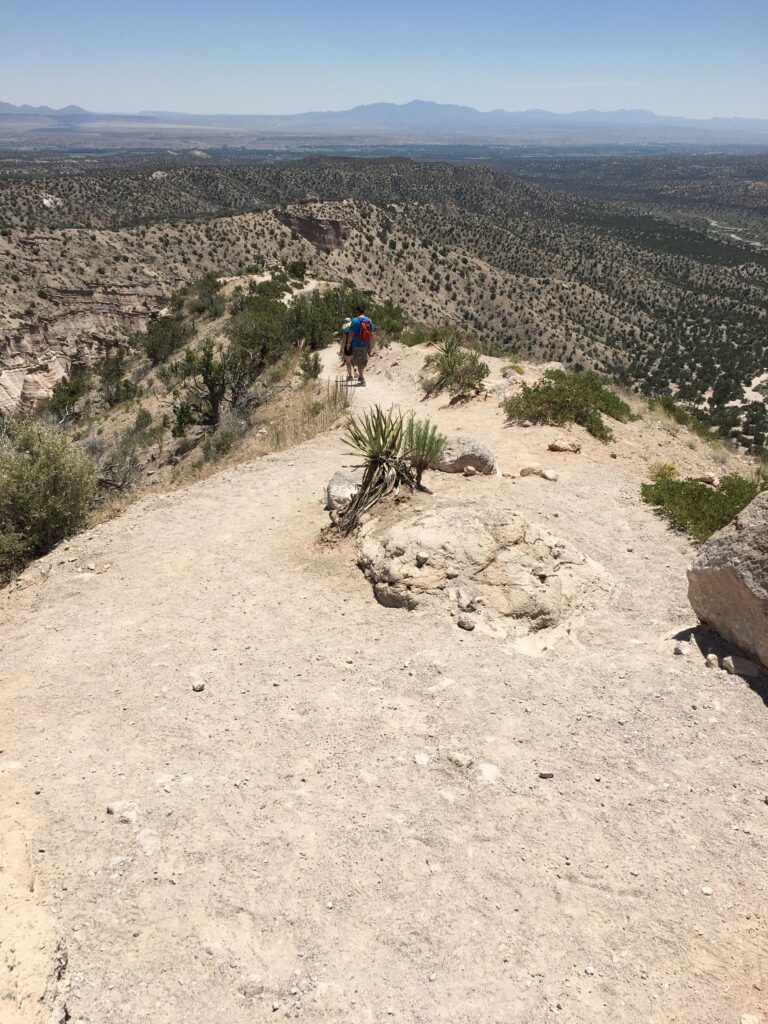
What to Bring
-
Water: Bring plenty of water, especially in the warmer months. The desert can be hot and dry, and it’s essential to stay hydrated.
-
Sun Protection: Wear sunscreen, sunglasses, and a hat to protect yourself from the sun, which can be intense, especially in summer.
-
Footwear: Wear sturdy hiking boots or shoes with good traction, as some sections of the trail can be rocky and uneven.
-
Camera: The landscapes are truly unique, so be sure to bring a camera or phone to capture the incredible rock formations and panoramic views.
-
Snacks: While the hike is not particularly long, having a snack on hand can be helpful for maintaining your energy, especially if you plan to linger at the summit for a while.
Safety Tips
-
Watch for Wildlife: The area is home to various wildlife, including lizards, snakes, and birds. While encounters are rare, always stay alert and give animals plenty of space.

-
Stay on the Trail: The rock formations and surrounding desert landscape can be fragile, so be sure to stick to the established trail to minimize your impact on the environment.
-
Weather Awareness: The weather in this region can change quickly. Be sure to check the forecast before you head out and be prepared for sudden shifts in temperature or possible afternoon thunderstorms, especially in the summer.
Conclusion
The Kasha-Katuwe Tent Rocks Canyon Trail is a truly unforgettable hiking experience that showcases some of New Mexico’s most unique geological formations. With its combination of slot canyon views, fascinating hoodoos, and sweeping desert vistas, it’s a trail that will leave you feeling both awed by nature and invigorated by the hike. Whether you’re a seasoned hiker or just someone looking for a memorable adventure, the Tent Rocks Trail offers a rewarding journey that you won’t want to miss.


